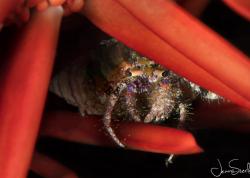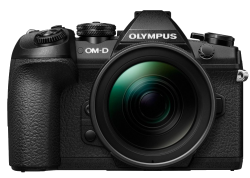Advanced Strobe Techniques - Backlighting
Advanced Strobe Techniques - Backlighting
Make Your Subjects POP Using Backlighting!
By Ridlon Kiphart

We all remember what we were taught in Underwater Photography 101 - if you use one strobe, put it off to the side at a 45 degree angle to the subject (to reduce particle reflection) and if using two strobes, place them off to the sides of the camera facing straight ahead or slightly toed out. The closer your subject is to the lens, the closer you need to bring your strobe(s). There are more iterations to this basic rule, but I’ve watched a LOT of people shoot underwater over the years and most underwater photographers use the same lighting configurations, and predictably, get the same results.
Ever since I took sketching, art and architecture classes in college, I have been fascinated by light. Why? Because form is only revealed through the presence of light. And how you use light to reveal form completely changes how that form is perceived. This holds as true in underwater photography as in drawing. So I am always testing interesting ways to use light to reveal form underwater and one of the things I do is put my strobes in different positions. Doing so creates an image with a different look, feel and texture. It tells a different story.

Using Backlighting
Recently, I was on a 1 1/2 month assignment in Thailand and the Philippines which gave me a generous amount of time to play with my latest favorite technique - backlighting.
Backlighting isn’t a new idea. It is used extensively in movies and on-stage theatrical performances. It reveals the subject in a very different, often dramatic way and that is what I was looking for.
Specifically, I was interested in using it in two roles. The first was to separate a subject from its’ background and make it “pop.” I was shooting a lot of Ornate Ghost Pipefishes (Solenostomus paradoxus) that were usually camouflaged in matching crinoids (as they are evolved to do) and the fish were getting lost in the cluttered background of the images. This gave me the idea to use backlighting. The second role was in seeing how it affected fish that were semi-transparent or translucent. The results were dramatic in both cases.
In the first role, I was able to get the Ornate Ghost Pipefishes to pop from their cluttered and camouflaged backgrounds.

In the second role, I was able to produce some images where the fish seem electric. They look like they are plugged in to a neon sign and have a fantastic, luminescent quality to them.

The actual position of the strobes varies depending on the shot. I used one strobe to illuminate the front of the subject and the rear strobe was usually to the back and off to the side. The strobe needed to be off to the side so it didn’t appear in the image and also to prevent the illumination of backscatter. In some of my first shots, I got a lot of backscatter until I moved it to the side a bit and angled it across the subject from behind. Some of the images were almost side lit, creating some dramatic shadows.




Next up? Using 3 and even 4 strobes. Our current underwater paradigm is 1 or 2 strobes because that is what everyone does and that is how most rigs come setup. But for different wide-angle situations, I can see where having more strobes would be very advantageous. Also, I am interested in backlighting from two different directions and seeing what results. I’ll let you know!
All Images: f16 1/125 ISO200 strobes STTL
Nikon D7000, Nauticam housing, dual Inon Z240 strobes, Nikkor 60mm f2.8G ED
About the Author
Sharkman (aka Ridlon Kiphart) is a Travel Editor for UWPG, founder of Global Diving Adventures and three time semi-finalist for the BBC Wildlife Photographer of the Year. This fall, he will be leading a bucket list UWPG adventure to photograph and film the great white sharks of Guadalupe. Click for more details or to join him.

Further Reading
-
Creative Underwater Shooting Techniques
-
Basic Underwater Strobe Positions
-
The Complete Underwater Strobe Guide
Where to Buy
Please support the Underwater Photography Guide by purchasing your underwater photography gear through our sister site, Bluewater Photo & Video. Click, or call them at (310) 633-5052 for expert advice!
RECOMMENDED ARTICLES
SUPPORT THE UNDERWATER PHOTOGRAPHY GUIDE:
The Best Service & Prices on u/w Photo Gear
 Visit Bluewater Photo & Video for all your underwater photography and video gear. Click, or call the team at (310) 633-5052 for expert advice!
Visit Bluewater Photo & Video for all your underwater photography and video gear. Click, or call the team at (310) 633-5052 for expert advice!
The Best Pricing, Service & Expert Advice to Book your Dive Trips
 Bluewater Travel is your full-service scuba travel agency. Let our expert advisers plan and book your next dive vacation. Run by divers, for divers.
Bluewater Travel is your full-service scuba travel agency. Let our expert advisers plan and book your next dive vacation. Run by divers, for divers.































